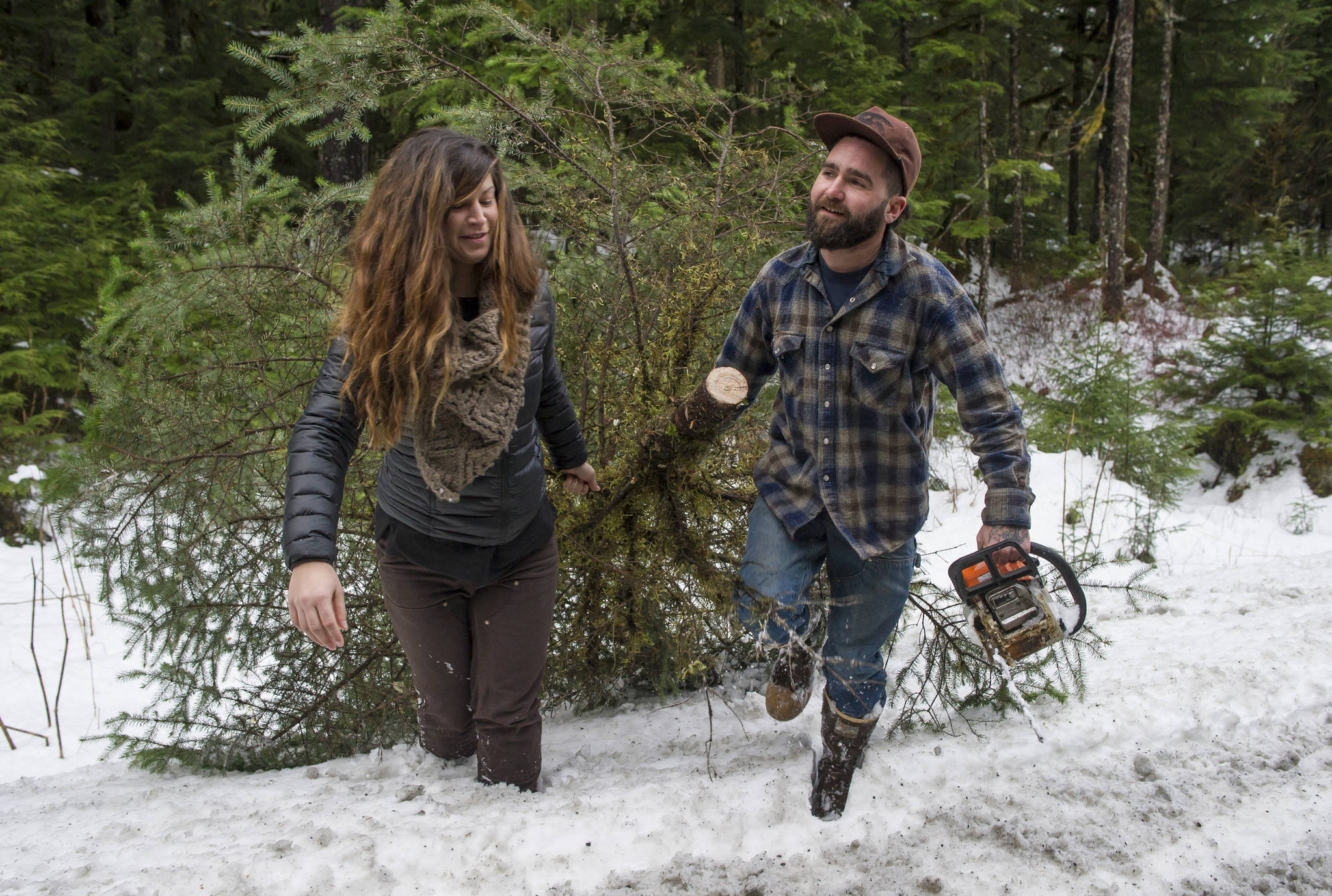If you hear a hearty “timber!” when walking through the woods this December, it’s a good idea to look up: you may be hiking in one of the City and Borough of Juneau’s three designated tree cutting areas.
Juneau residents are allowed to harvest one evergreen tree during the month of December on city land. The U.S. Forest Service allows for a similar harvest on Tongass National Forest land. If you want to harvest a tree legally and responsibly, there’s a lot to keep in mind.
CBJ offers three designated tree cutting locations around Juneau. Two lie adjacent to North Douglas Highway and the third is near Bridget Cove on the landward side of Glacier Highway. All locations have road access, making transporting your harvest as easy as hauling an untrimmed tree can be.
The main thing to remember, said CBJ Lands &Resources Deputy Manager Dan Bleidorn, is to stay out of muskeg areas when harvesting trees. Muskegs are watery swamps or bogs where trees struggle for years to put down roots. The small conifers that grow in muskeg won’t come back soon, so CBJ requires that tree harvesters leave muskeg trees standing.
“Trees in muskeg areas take a long time to grow and a lot of times those trees in muskeg areas are actually very old,” Bleidorn said. “It takes a long time for them to grow back once they’re cut.”
The U.S. Forest Service allows every Juneau household to harvest one tree without a permit every year from Tongass National Forest land. The tree should be no larger than 7 inches in diameter at the base of the tree.
Cutting must be 330 feet from a bald eagle nest, so it is good practice to avoid areas 100 yards from the shoreline, and it must also be at least 100 feet from salmon streams and roads. It’s important also to know where this is allowed on Forest Service land, as Auke Village, Lena Beach Recreation Area and the entire Mendenhall Glacier Recreation Area are excluded.
In an email to the Empire, Forest Service spokesperson Dru Fenster said Christmas tree harvesters should pay attention to which trees to cut. Some, like Sitka spruce and western hemlocks, lose their needles quickly or may need special care to last through the holidays. USFS encouraged would-be lumberjacks to visit their office on Mendenhall Loop Road for help planning a tree harvest on USFS land.
CBJ requires tree harvesters to cut trees off at ground level and scatter branches, while the USFS requires harvesters to cut off trees within 12 inches of the ground.
Clarification: Trees cut on USFS land must measure 7 inches in diameter or under when measured at the base of the tree. The original version of this article stated simply that trees must measure 7 inches or under in diameter and did not include information about where this measurement must be taken.

